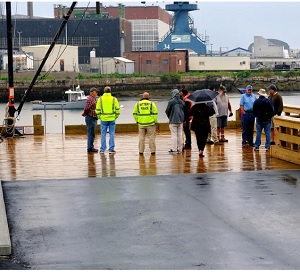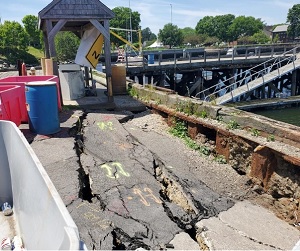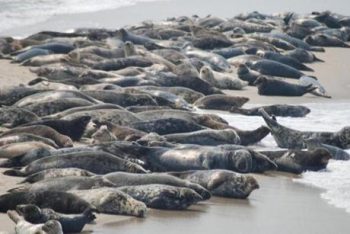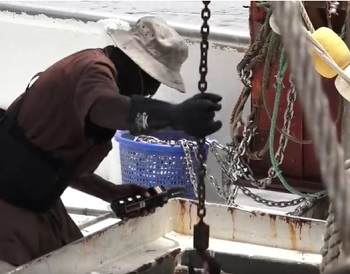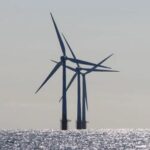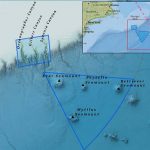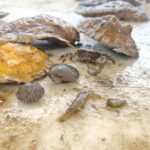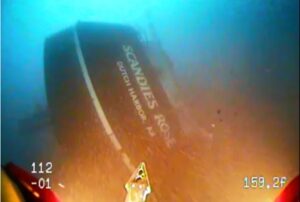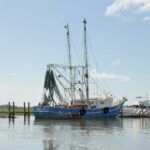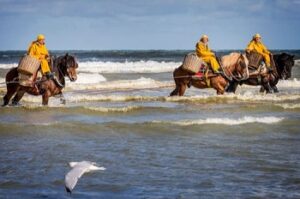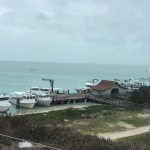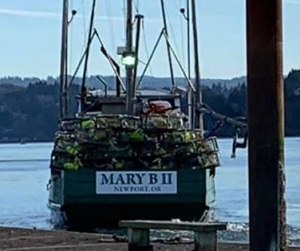Monthly Archives: June 2019
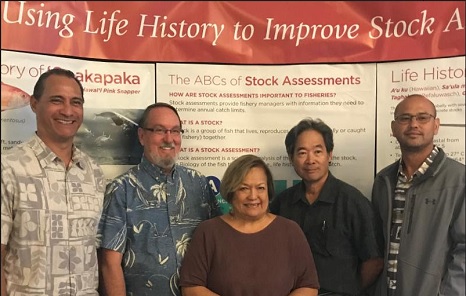
Council Responds to Honolulu Civil Beat Series, Acts on Hawai’i Fisheries and Protected Species
The Western Pacific Regional Fishery Management Council yesterday in Honolulu responded to the Honolulu Civil Beat’s three-part series suggesting members of the Council’s Executive Committee engaged in decision-making for self-profit. Vice Chair John Gourley (Commonwealth of the Northern Mariana Islands, or CNMI) said the Civil Beat articles implied that funding he received from the Sustainable Fisheries Fund for fish biosampling continued after he became a Council member. Honolulu Civil Beat statements about Gourley were included in a section titled “Conflicts of Interest.” >click to read<08:32

Researchers regroup in wake of 4 right whale deaths
It’s been a deadly month for the endangered mammals, with the carcasses of two other whales — an adult female and a 9-year-old male — reported June 4 and June 20, also in the Gulf of St. Lawrence. Photo analysis of the carcasses found Tuesday identified one as a 33-year-old male named Comet and the other as an unnamed 11-year-old female who had no documented calf, according to New England Aquarium’s Anderson Cabot Center for Ocean Life. The two carcasses were seen near the Acadian Peninsula in New Brunswick and west of the Magdalen Islands in Quebec, according to Canadian officials.,,, The National Oceanic and Atmospheric Administration is taking part in preplanned talks with the Canadian government on North Atlantic right whale protections this week in Halifax, Nova Scotia, NOAA spokeswoman Jennifer Goebel said. >click to read<20:56

Woodrow officially takes director’s helm at ASMI
Alaska’s seafood industry has a new captain at the helm of its main marketing agency. Jeremy Woodrow, previously the organization’s communications director, officially took over as executive director of he Alaska Seafood Marketing Institute this June.,,, Though he’s not in commercial fishing at present, he said his family has a long history in it. That connection has helped inform his involvement in the ever-changing fisheries of Alaska, and though ASMI stays out of fisheries policy, there are plenty of other tangles to sort out. >click to read<19:19

TV crabber nets Conch Key lodge, marina
“Deadliest Catch” crabber Erik James didn’t just check into a room at the Bayview Inn Motel & Marina, he bought all 11 rooms, the bay bottom and the four parcels the hotel sits on. He has rebranded it as the Conch Key Inn & Marina and given it a funky, tropical motif of at least five different colors. “I painted it all bright colors so people can see it, and I’m going to build the gnarliest place in town,” he said. “As everything else around changes, I want this place to stay as a real fishing village and a place where locals can come and have a beer, be comfortable and bring their dog.” >click to read<17:27
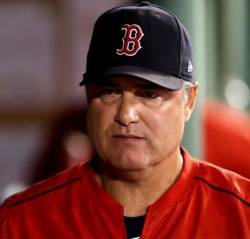
Former Boston Red Sox manager John Farrell fulfilling ‘lifelong dream’ as lobster boat skipper
The landscape has changed dramatically for both sides since John Farrell and the Boston Red Sox parted ways in October 2017.,, As for Farrell, he’s dropped off the radar. Nowadays, he’s reportedly waking up at 3:15 a.m. to tend to the 800 lobster traps he has sitting off the coast of Massachusetts. Farrell grew up in New Jersey helping his father, Tom Farrell, on his lobster boat. Before going on to pitch — and later manage — in the majors, Farrell was getting up at 4 a.m. to help shovel bait before setting out on the water. >click to read<13:55
John Farrell: Early life as lobsterman, influence of father Tom molded Boston Red Sox manager – >click to read<
Athearn Marine Agency Boat of the Week: 39′ BHM Dragger, 435HP Volvo, Nextgen – 3.5 KW, State and Federal Permits Available
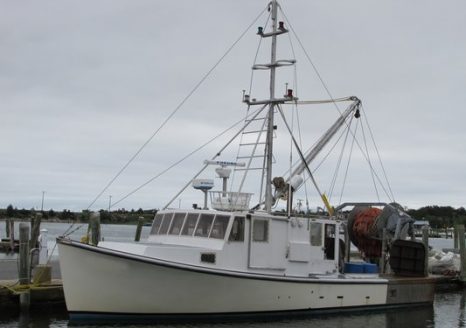 Specifications, information and 24 photos >click here< To see all the boats in this series, >click here<11:38
Specifications, information and 24 photos >click here< To see all the boats in this series, >click here<11:38
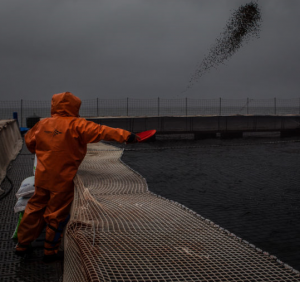
Dirty Business – Having taken a toll in Chile, farmed salmon industry arrives in Argentina
Argentina’s National Aquaculture Project, signed with Norway in March 2018, aims to spur the development of the salmon industry in Tierra del Fuego, an archipelago at the southern tip of South America. Environmentalists and scientists fear that errors committed on the Chilean side of Patagonia will be repeated, to the detriment of the environment on the Argentinian side. Among the environmental impacts of the Chilean salmon industry are escapee fish that become established as introduced species, pollution from farms’ waste food and feces, and the overuse of antibiotics. >click to read< 09:32

Lobster co-op, lobster town get working waterfront grants
There’s good news from Augusta for two Downeast towns. Last week, the Land for Maine’s Future Board announced funding for six projects that will help protect and sustain the state’s dwindling working waterfront resources. Two of the projects are in eastern Maine. The Stonington Lobster Co-op has received a preliminary allocation of $216,250 from the program,,, Up the road in Washington County, the town of Jonesport,,, >click to read< 08:36
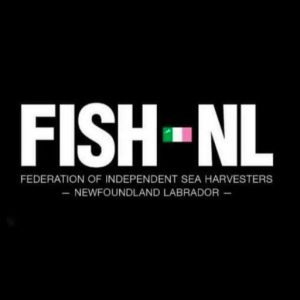
FISH-NL calls for elimination of cod quality program; five years later and price per pound has declined
“The cod quality project serves no other purpose than to extract fish from fishermen, and into the FFAW.”— Jason Sullivan, FISH-NL’s secretary-treasurer FOR IMMEDIATE RELEASE Wednesday, June 26th, 2019 The Federation of Independent Sea Harvesters of Newfoundland and Labrador (FISH-NL) is calling for the elimination of the so-called cod quality program that directs hundreds of tonnes to the FFAW-Unifor — with the fish once again set aside for all harvesters to catch. >click to read<08:08
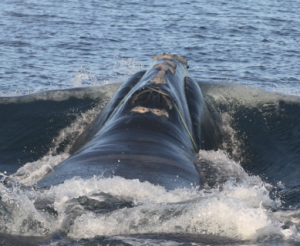
2 more dead right whales discovered in Gulf of St. Lawrence
Two more dead North Atlantic right whales have been found in the Gulf of St. Lawrence, says Fisheries and Oceans Canada. The whales were located near the Acadian Peninsula of New Brunswick and west of the Magdalen Islands, a department news release said Tuesday. They are the third and fourth confirmed deaths of North Atlantic right whales to be reported in Canadian waters this year. >click to read<07:47
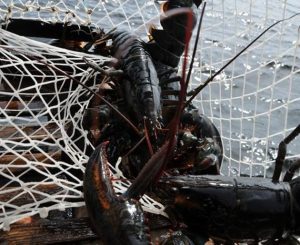
Science journal article disputes claims that aquaculture is a sustainable industry
Inka Milewski, a research associate in the Department of Biology at Dalhousie University, said Monday her conclusions are partly based on a series of long-term studies of a fish farm in Port Mouton Bay, N.S. She says evidence of an impact on lobster populations and eelgrass in the bay around those pens run counter to a “narrative” found on various federal Fisheries websites that Ottawa manages the industry in “a sustainable way.” Her report notes that Ottawa had collected reports of 14.4 metric tonnes of antibiotics and 439 metric tonnes of hydrogen peroxide pesticides being placed in the waters since federal aquaculture regulations came into force four years ago. >click to read<17:51
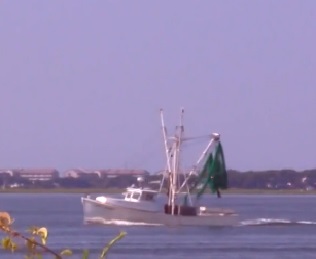
Proposed “Let Them Spawn” bill looks to further regulate NC fishermen
There’s a debate going on in our state right now concerning fishing. A new bill just passed the North Carolina House. It’s focused on certain species and how to regulate them. The bill looks at what you can keep and what you have to throw back. There are several fish this bill targets: Southern flounder, Spot, Atlantic Croaker, Kingfish, Striped Mullet, and Bluefish – all species lawmakers say have been declining for years.,,,The bill, known as the “Let Them Spawn” bill would require state fishery managers to set a minimum size limit to try and let 75% of these 6 species reproduce at least one time. >click to read<14:03

Lobster boats converge on Rockland
Rockland — Although there was a stiff breeze and a few rain drops, a posse of area lobster boats met up in Rockland Harbor for the annual Maine Lobster Boat Racing Association’s second event of the season June 16. This year’s fastest boat was Cameron Crawford’s Wild Wild West, which suffered a broken steering arm in last year’s competition. Race results released June 24 are as follows, with a bunch of great photos! By Beth A. Birmingham >click to read<13:26
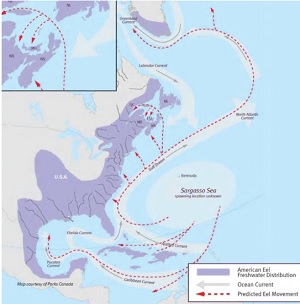
Inside the secret, million-dollar world of baby eel trafficking
In the parking lot of an Irving gas station in Aulac, N.B., not far from the Nova Scotia border, Curtis Kiley popped the trunk of a Toyota Corolla. Inside was a white bucket containing what looked like a giant hairball, the type that might be pulled from a bathtub drain. Except it was alive — a wriggling, slithering mess. This was just an initial sample Kiley had brought to show a prospective black-market buyer, a woman he knew only through text message as “Danielle.” He was ultimately hoping to unload up to 300 kilograms of the tiny creatures, a huge haul worth $1.3 million on the open market, but one he was offering at a steep discount. Moments later, Kiley’s world turned from dollar signs to handcuffs. >click to read<10:40
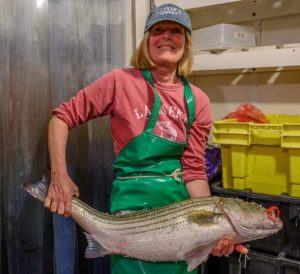
Commercial Striped Bass Season Opens, Amid Concerns About Fishery
By the end of the day Monday, the first day of the commercial striped bass season, the Menemsha Fish House had brought in 297 filleted pounds of the elusive — and profitable — fish. Otto Osmers, a commercial fisherman and fishmonger at the Fish House, said it was an about average commercial day in terms of pounds of fish landed. And he acknowledged that the season begins amid concern among fishermen and regulators over declining stocks. >click to read<10:05

Vineyard Wind Finalizes Turbine Array to Boost Mitigation for Fishermen and Historic Preservation on Nantucket and Vineyard
Vineyard Wind announced today that it has adjusted the final turbine array for the United States’ first large-scale offshore wind facility by changing the location of three 9.5 megawatt (MW) turbines; the total project size remains unchanged at approximately 800 megawatts (MW). The design change eliminates three turbines located near the Nantucket Historic District and Chappaquiddick, which comprises the eastern end of Martha’s Vineyard. >click to read<09:35
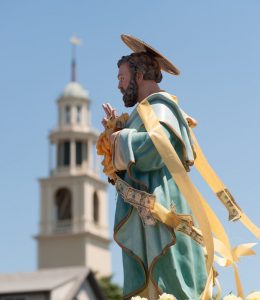
This is the ninty second year of St. Peter Fiesta in Gloucester, Massachusetts! June 25-30, 2019
Back in 1927, Captain Salvatore Favazza had a life size statue of Saint Peter, and located the statue in the Italian District. Soon after, the women would say prayers there, as they stood by the statue. In 1931 they started the Saint Peters Fiesta. I can recall in 1952 ,I was ten years old and lived in the heart of were the fest was held. Back then there were no rides or games. But they did have a donkey ride and they had seine boat races and the Greasy pole contest .The fisherman would take the four days off and participate in the events. On Friday they had a block dance. On Saturday and Sunday they had the seine boat races and the Greasy pole. On Sunday the would have a mass and the bishop would preside ,and than the parade!!! It is a great time of the year to visit Gloucester! So,,,, if you’re in the area come and see for your self how welcomed you’ll become! Thanks, and hope to see you there! Sam Parisi, Gloucester, Mass. 08:32
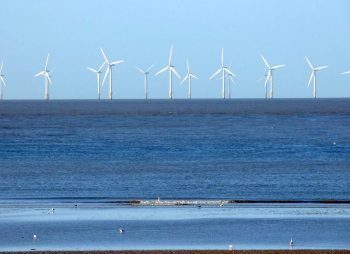
As Wind Farms Overwhelm The Irish Sea, Isle Of Man Seabird Populations Plummet
Since the world’s biggest wind farm went up in the Irish Sea, Herring Gulls are down 82%, European Shag down 51%, and Razorbills down 55%. The list goes on…Isn’t there a conspicuous connection? The Isle Of Man wildlife charity Manx Birdlife has reported a shocking 40% decline in the populations of many species of seabirds around the island’s coast. The worrying figures emerged following a comprehensive census that took place over two years. Whatever the reason for the sharp decline of the birds, it illustrates that something has gone very wrong. Wind Farms? >click to read<18:08
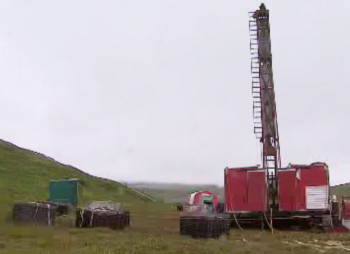
Bristol Bay fishermen renew call for input on Pebble Mine as commercial fishing season opens
Commercial fishing season is underway in Bristol Bay; but instead of focusing all their attention on their catches, fishermen are focused on the future the Pebble Mine could have on their livelihood. The public comment period on the Draft Environmental Impact Statement closes July 1. “Our industry in Bristol Bay is in the fight of our lives against relentless attempts by the Pebble Limited Partnership, fueled by a ‘dig baby dig’ attitude from the US Army Corps of Engineers, to develop the world’s largest and most dangerous open pit mine at the headwaters of our fishery,” >click to read<. a lot of info, and some links to comment. 16:55
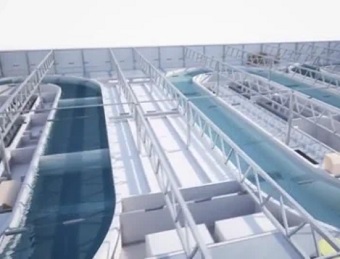
Attorneys continue municipal law debate in case against Nordic Aquafarms
As the lawsuit against Nordic Aquafarms, Inc., the City of Belfast, and other parties-in-interest continues the slow procession through the legal system, the amount of evidence submitted for the case has grown to require two two-inch binders, holding stipulation exhibits 1-36, which include emails, public notices, and City of Belfast Answers to Interrogatories, etc. The binders are in addition to a legal file also nearly an inch thick filled with court dates, motions, objections, and other legal documents. The suit, brought by Eleanor Daniels and Donna Broderick, has been one of many issues Nordic has encountered on its quest to build one of the world’s largest land-based salmon farms in the small coastal city. >click to read<12:27
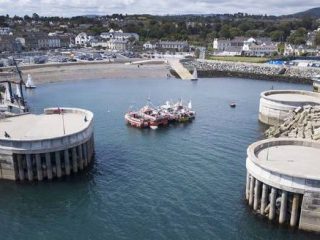
Fishermen drop anchor in protest
Fishermen in Greystones, Co Wicklow, took to the water around the town’s marina yesterday in protest over a decade-long dispute about access to the harbour. Fishermen from the area moored five boats in the marina, asking other harbour users not to pass by, as their row with the local council and harbour operators escalated. Fisherman Tim Storey said the protest was to show locals who have fished waters nearby and previously ,,, click to read< 11:51
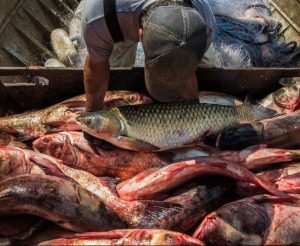
Little attention has been paid to grass carp, a gluttonous herbivore that could decimate Great Lakes wetlands
Chicago has long been characterized as the last line of defense in the war to prevent bighead and silver carp from reaching the Great Lakes. But as efforts ramp up, another little-discussed species of Asian carp is already spawning in the region and could become the first to be established. Illinois and the U.S. Army Corps of Engineers have moved closer to constructing a channel,,, Unlike silver and bighead carp that scientists say would compete directly with Great Lakes fish for food, grass carp eat vegetation that provides vital habitat for the region’s waterfowl,,, Some Great Lakes states — Illinois, Indiana, Ohio, Pennsylvania and New York — still allow grass carp to be imported, Video>click to read<11:11

Maine Aqua Ventus floating wind farm gets green light
Maine Gov. Janet Mills gave the go-ahead for a floating offshore wind farm off the coast of Maine. “With the innovative work being done at University of Maine, our state has the potential to lead the world in floating offshore wind development,” Mills said. “This long-overdue bill will move us in that direction.” >click to read<10:10
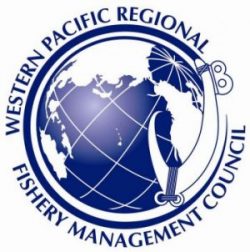
Western Pacific Fishery Management Council meeting in Honolulu, HI, June 25-27, 2019
Time: 8:30 am to 5:00 pm, Location: YWCA Fuller Hall, Honolulu, HI. 178th CM Summary of Action Items, 178th CM WPRFMC Agenda
178th CM FR Notice Can’t make it to the Laniakea YWCA Fuller Hall for the 178 CM? You can listen to the meeting online by clicking the link: https://wprfmc.webex.com/join/info.wpcouncilnoaa.gov08:58
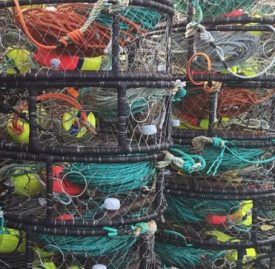
To Save the Whales, Crab Fishers Are Testing Ropeless Gear
Commercial crab fisher Dick Ogg, of Bodega Bay, California, knows his industry and its several hundred fishers must adapt. “We have to change. This is all about protecting our environment, the creatures that live in it, and our industry,” Ogg says. Last year, Ogg voluntarily tested two prototypes that deploy crab pots without leaving ropes in the water. One, made by Desert Star Systems, is designed so a fisher can send an acoustic signal that triggers the pot to open a mesh bag, releasing a buoy and coiled rope that float to the surface. In his test, the retrieval gear never appeared and Ogg lost his pot. >click to read<08:34
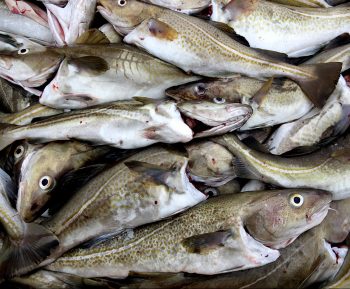
This discovery could be the key to managing New England’s cod population
Although the species is managed as a single population, cod in the Gulf of Maine can be divided into two genetically-distinct groups. And according to a new study, understanding the unique behavior and lifecycles of these two groups may be the key to creating a better management strategy. “The current stock assessments for Gulf of Maine cod assume that the population is one single, homogeneous unit,” Dean says. “All stock assessment models have to make gross oversimplifications. But sometimes those simplifications can create inaccuracies.” click to read<21:39






